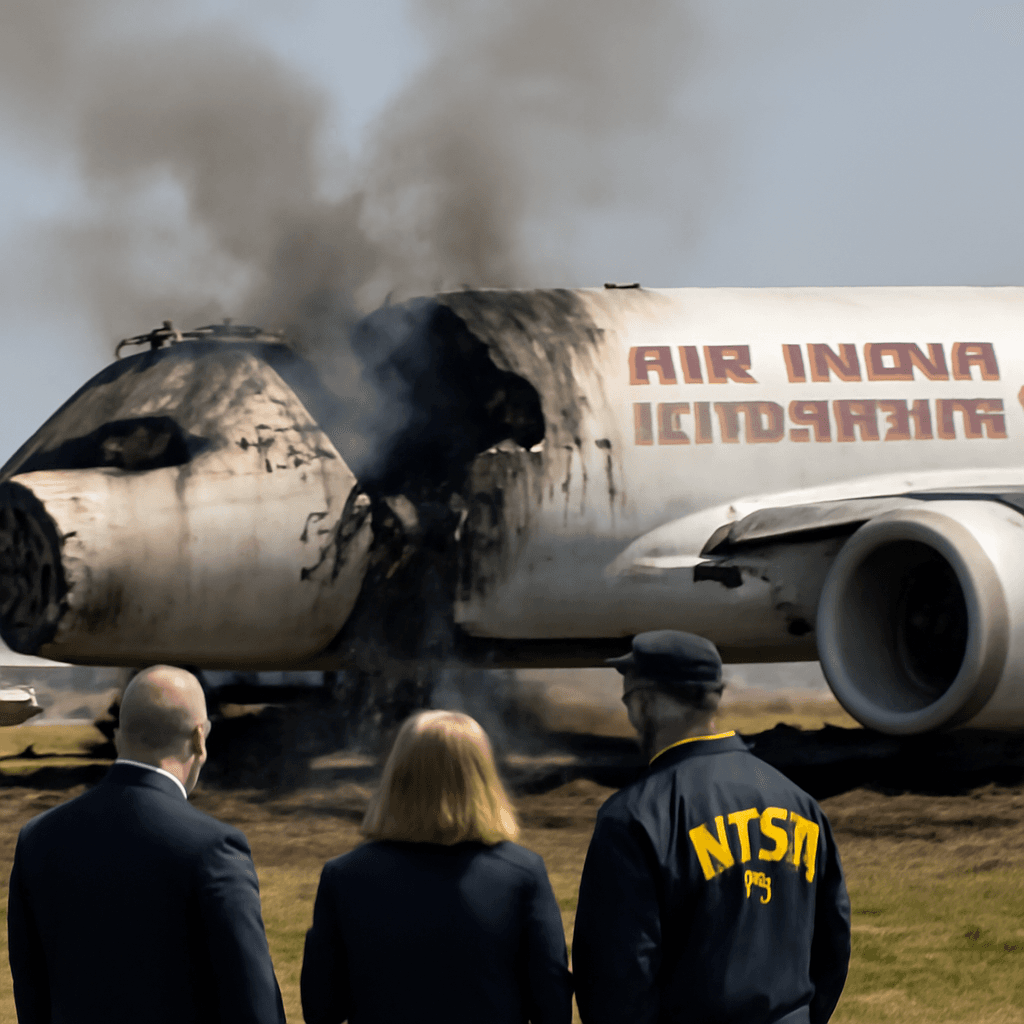Electrical Malfunction Could Explain Fuel Switch Cut-Off in Air India Boeing 787 Crash
In a tragic turn of events last month, an Air India Boeing 787-8 flight from Ahmedabad to London Gatwick crashed, resulting in the loss of 260 lives. While early speculation centered on pilot error, recent expert analysis suggests that an electrical malfunction might have played a critical role in the accident by inadvertently cutting off the fuel supply to the engines shortly after takeoff.
Insights from Aviation Expert Captain (Retd) Ehsan Khalid
Retired Air Force pilot and aviation expert Captain Ehsan Khalid provided a detailed commentary on the incident, shedding light on the complexities behind the fuel switch cut-off detected in the preliminary report released by the Aircraft Accident Investigation Bureau (AAIB) on June 12.
According to Captain Khalid, the evidence points to a possibility that an electrical signal malfunction may have caused the fuel switches to electronically toggle to the cutoff position without the pilots’ intervention or knowledge. This sudden fuel supply interruption was recorded to have happened within a mere second after takeoff, a critical phase of flight where split-second decisions and mechanical reliability are vital.
Understanding the Fuel Switch Malfunction
Captain Khalid explained the technical nuance of the switches, likening the system state to binary signals—where “1” and “0” denote different switch positions. An electrical glitch could cause the switch to register a change from “run” (1) to “cutoff” (0), without the physical toggle being moved by the pilot. This subtlety is vital because it repositions the incident away from pilot error towards a potential aircraft systems failure.
"The AAIB’s careful choice of wording in their report — avoiding saying that the pilots physically moved the fuel switches — aligns with this possibility," Khalid said. "They understand that moving a switch from cutoff to run triggers the engine start sequence, so the report’s precise language reflects a cautious approach pending further investigation."
What the Cockpit Voice Recorder Revealed
The 15-page preliminary report included transcribed exchanges from the cockpit voice recorder, where one pilot questioned the sudden fuel switch cut-off, and the other denied having done so. This piece of evidence corroborates the theory of an involuntary or system-driven malfunction.
Captain Khalid lamented that the full cockpit voice recording has not yet been released publicly by the AAIB, stressing that transparency could dispel rampant speculation and protect the professional dignity of pilots—who he refers to as "the guardians of flight safety." Pilot groups have expressed concerns about the negative implications of the report and urged restraint from unfounded speculation pending final conclusions.
Broader Implications for Aviation Safety
This evolving narrative underscores a critical discussion in aviation safety: mechanical and electrical system integrity versus human factors in accident causation. If an electrical malfunction is proven to be the root cause, it could trigger a comprehensive review of Boeing 787’s fuel control systems and related electrical components, especially in high-stakes flight phases like takeoff.
- Immediate scrutiny of aircraft electrical systems may increase across fleets worldwide.
- Regulators and manufacturers could face pressure to implement enhanced detection and warning systems for unintended fuel switch activations.
- Pilot training programs might incorporate new protocols to handle such rare but catastrophic system anomalies.
Looking Ahead
While the AAIB’s preliminary report refrains from drawing definitive conclusions, the integration of expert analysis like Captain Khalid’s enriches our understanding of what may have gone wrong. It also serves as a timely reminder of the complexities in aviation incident investigations, where each detail demands measured interpretation.
As investigations continue, the aviation community and public alike await further transparency and data disclosures that will help cement facts from conjecture, honor the victims, and shape future preventive measures.
Editor's Note
This tragic incident highlights the delicate interplay between human oversight and technological reliability in modern aviation. The possibility that an unnoticed electrical malfunction could trigger a fatal fuel cut-off challenges conventional assumptions and calls for renewed scrutiny of aircraft design and safety protocols.
For readers and aviation stakeholders, key questions remain: How can aircraft systems be better safeguarded against such hidden failures? What measures can improve investigative transparency to build public trust? And importantly, how can the industry continue to evolve while preserving pilot authority and accountability?
By exploring these dimensions thoughtfully, we not only honor those affected but also contribute to safer skies.



















